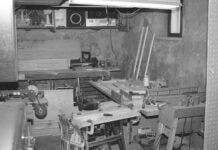Most of us have an occasional need to measure the parts and pieces we use to build our aircraft. For example, when preparing to drill a rivet hole, we want to confirm that the proper drill bit has been selected prior to drilling—as well as identifying the right size rivet for that hole. Usually our good judgment tells us we don’t need to measure all of the items we repeatedly use. We know what a 1/8-inch rivet and drill bit look like if that is the only size that is required for a given project. But after switching to a different size, there is an urge to be safe and start measuring parts to make sure we’re working with the right ones.
Many aircraft parts seem to conveniently use the fractional inch unit of measure. For example, rivet and bolt diameters are measured in fractional inches. We might use 1/8 and 5/32 for rivets, and 1/4 and 5/16 for bolts (AN-4, AN-5). The same goes with tubing. Our fuel line could be 1/4 or 3/8 of an inch. And the diameter of drill bits to make holes for these parts is often measured in fractional inches. Wouldn’t it be great if we had a tool that could conveniently and quickly measure the inside and outside dimensions of these parts?
Modern day electronic calipers are just right for this job. They are inexpensive (around $20 at Amazon and Harbor Freight), and many will display fractions directly on their LCD screen. Manipulating their inside and outside jaws provides fast measurement of bolts, rivets, drill bits, tubing, sheet metal thickness, and so much more. There is even a depth gauge on the end to determine lengths inside cavities where the jaws cannot reach.
Not all aircraft components are adequately measured in fractional inches. This is where modern-day electronics makes our lives easy. With a press of a button, the caliper readout will change to decimal units (example: .020 for 20 thousandths of an inch). Another press of that same button will convert the readout to millimeters. This versatile tool will toggle between these three popular units of measure (fractional inches, decimal inches, and millimeters), so you can choose the appropriate unit for the job.
The gauge or thickness of aluminum sheet is often measured and sold in thousandths of an inch. Most of us cannot identify by feel with repeated accuracy .020-inch vs .025-inch thick aluminum sheet. A caliper is an excellent tool for making this determination, which is critical for choosing the right material in our aircraft. Many popular aircraft kits and designs use millimeters as the sole unit of measurement in their blueprints. The very same caliper tool can handle that, too.
As a means to avoid building errors caused by selecting wrong parts, the modern electronic caliper is indispensable. If you don’t own a caliper, I bet I will catch you one day holding a part against an old-fashioned straight ruler (as you squint to line up the edges) and take a visual reading that probably won’t end up being very accurate after all! Try an electronic caliper instead, and enjoy measuring with a modern, affordable tool!















